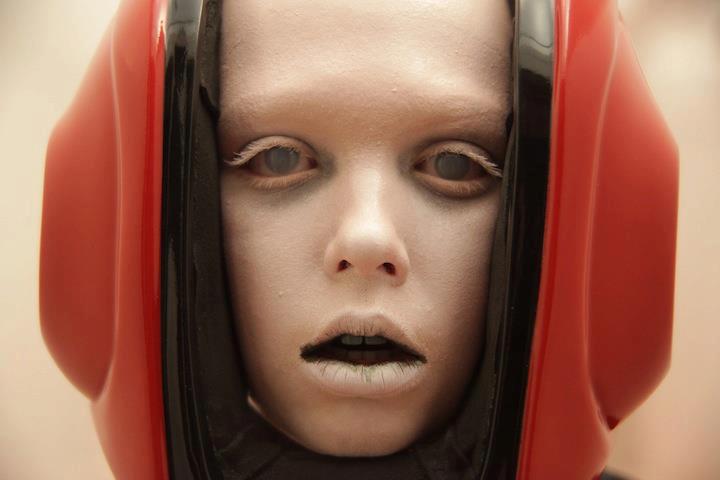
Since the early days of cinema, science fiction films have flourished, capturing the imagination and commanding impressive box office receipts along the way. But not all great populist SF have been widely seen, large scale franchises, or big event films with A-list stars.
Great speculative fiction is often found in small scale indie film attire and art house dress or have been lost over the years as the cult of admirers dwindled or got lost in something else. The following list guarantees an adventurous path of imagined futures, possible pasts, artificial intelligence, virtual reality, stinging satire and so much more, and perhaps best of all is that many of these films are relatively obscure and are bound to be new discoveries for many of you. Enjoy!
15. Renaissance (2006)
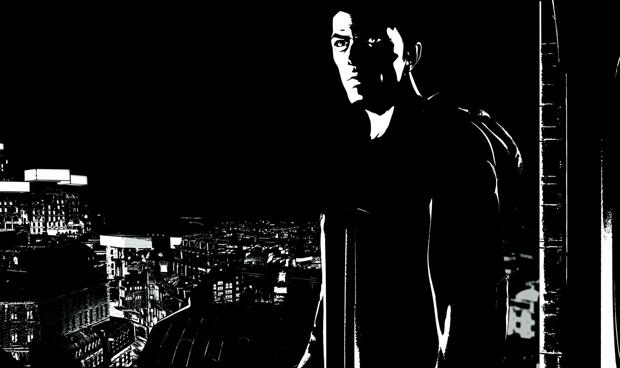
In the year 2054, Paris has become an industrial nightmare where the Avalon Corporation promises eternal youth and lasting beauty in the closely monitored City of Lights. Visually stark, spiked with high contrast extravagance, director Christian Volckman’s motion-capture black-and-white animation spectacle Renaissance is a detailed fever-dream of neo-noir sci-fi. A kinda-sorta French version of The Matrix, with optical splashes from Fritz Lang’s Metropolis (1927) and Richard Linklater’s A Scanner Darkly (2006) for added menace.
Daniel Craig is Barthélémy Karas, a tight-lipped cop after kidnapped scientist Ilona (Romola Garai), and most assuredly a far-reaching conspiracy involving Avalon is about to have all the film’s players at odds.
Granted, much of Renaissance’s plot is convoluted and the overstuffed narrative has a tendency to drag, but the B-movie plot is all on the side to the detailed animation and dizzying eye-candy visuals.
14. Dreamscape (1984)
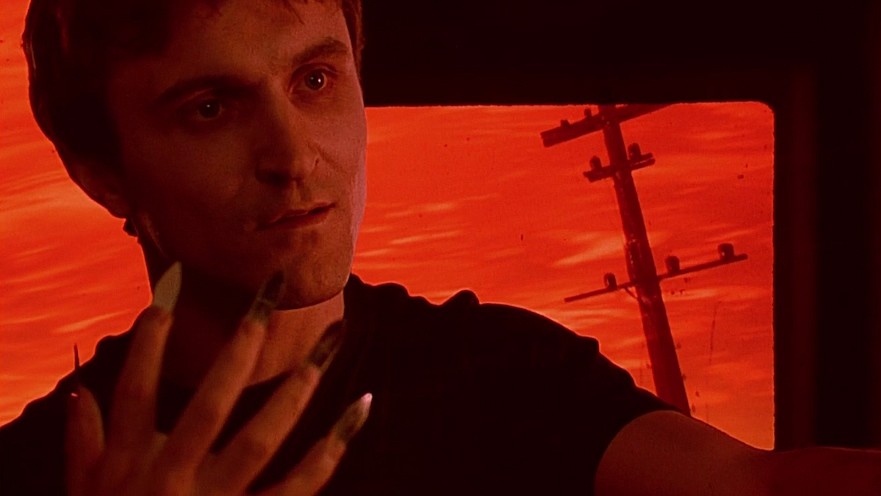
A mix of action, horror, and straight-up sci-fi makes Joseph Ruben’s Dreamscape a whole heap of messy fun. While it cribs more than a few chapters from Wes Craven’s A Nightmare on Elm Street, it’s also based partially on the 1966 Roger Zelazny novel “The Dream Master”, and smartly keeps a bold blend of adventure and humor in what could be a rather silly story of government-sponsored psychics trained to enter others’ dreams.
Alex Gardner (Dennis Quaid) is coerced into a secret government program that exploits his budding psychic skills under his former teacher Dr. Paul Novotny (Max von Sydow), and a seemingly dangerous official named Bob Blair (Christopher Plummer). With the help of a writer named Charlie Prince (George Wendt), and a dreamy scientist named Jane DeVries (Kate Capshaw), Alex learns of a plot to assassinate the POTUS (Eddie Albert) via dreams.
Dreamscape is at its best in the surreal and unsettling dream sequences throughout; including a scary snake-man, radiation-ravaged unfortunates, and other assorted atomic horrors (David Patrick Kelly’s evil psychic Tommy Ray Glatman is a blast, too), resulting in a surprisingly smart SF adventure that’s also a great artifact of 1980s pop culture.
13. The Incredible Shrinking Man (1957)
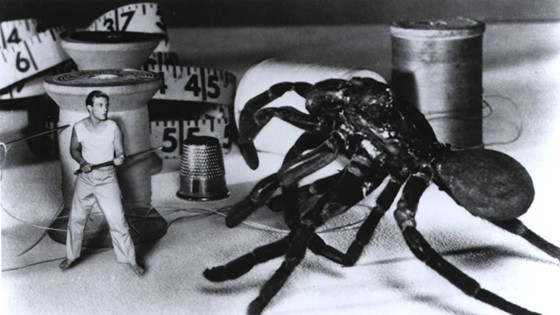
Director Jack Arnold’s The Incredible Shrinking Man is an unexpectedly great speculative tale that proves to be an existential treatise, deftly adapted by Richard Matheson from his own 1956 novel.
Scott Carey (Grant Williams) is accidentally exposed to a radioactive cloud of pesticides while on a yachting trip. At first nothing seems amiss, but several months later Scott realizes that he’s inexplicably shrunk in height by several inches. Doctors are baffled as Scott continues to shrink, and he becomes hostile and upset, lashing out at Louise (Randy Stuart), his hapless wife. Fearing that a cure will never be found, Scott becomes a national sensation, but uncertainty reigns.
Having retained his identity as he shrinks to subatomic sizes, fearful that he’d vanish into non-existence, Scott concludes: “Smaller than smallest, I meant something too. To God there is no zero. I still exist!”
The Incredible Shrinking Man poses a number of fascinating philosophical and scientific questions, and while the special effects are still charming and effective, it’s the devastating collapse of Scott’s marriage that makes the film a truly unsettling tragedy. Recommended.
12. Screamers (1995)
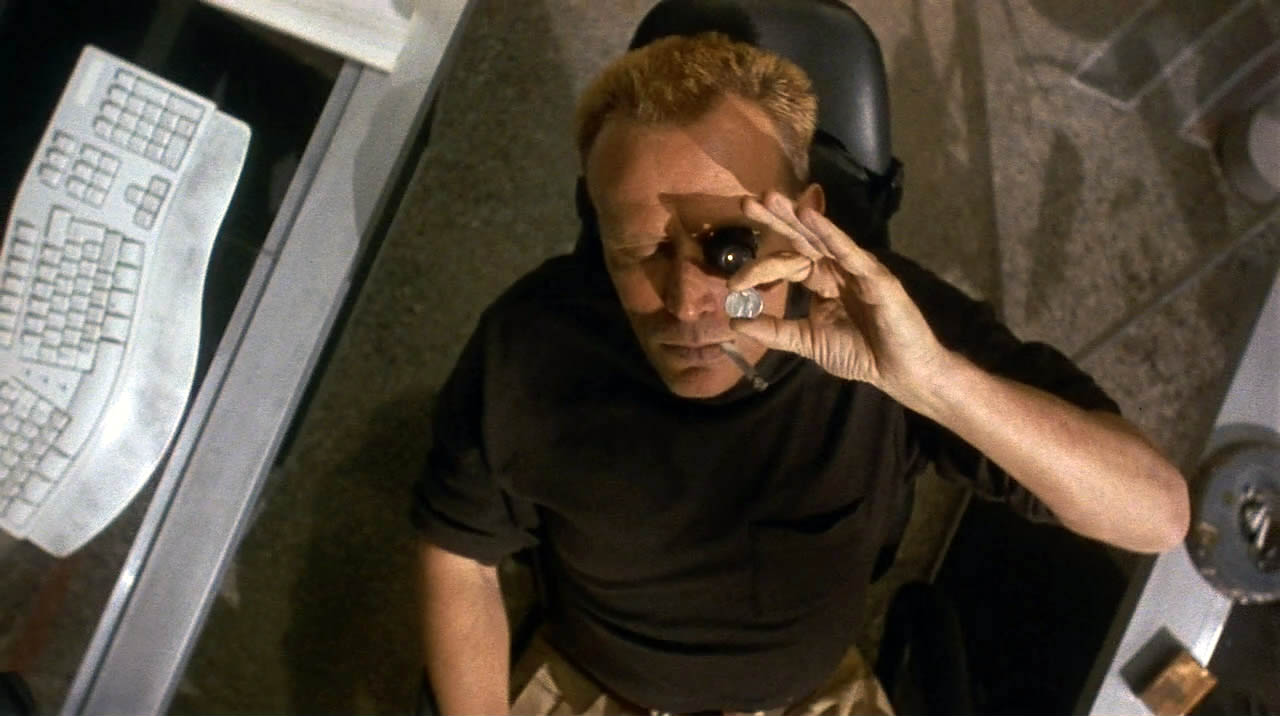
Reality and illusion come crashing in Christian Duguay dystopian Philip K. Dick adaptation that uses his 1953 short story “Second Variety” as a jumping off point for this oft overlooked cult classic. Set in the year 2078, on the planet Sirius 6B where a civil war is brewing between a resistance group of colonists, dubbed the Alliance and the mega-conglomerate called the New Economic Block.
The plot pushes in on the Alliance’s use of AI-assisted weaponry, called AMS (Autonomous Mobile Swords), popularly labelled “screamers” — for their high-pitched caterwauling when they strike — and the increasingly creepy variations of these killing machines. It’s easy to imagine that this source material was an inspiration for James Cameron’s The Terminator, and Screamers messes around with similar motifs and meanings as those mainstream movies.
Colonel Hendricksson (Peter Weller) of the Alliance, becomes increasingly more suspicious of his associates, and as it seems the ever-adapting screamers can infiltrate ranks with ease, and, save for an abundance of action movie clichés and placeholder characters, Screamers is a subversive howl.
While it may not be the most intelligent Dick adaptation, Screamers runs a gamut of guilty-pleasure schemes (intelligent characters act like idiots at almost every turn) recalling, at best, John Carpenter’s The Thing and Ridley Scott’s Alien, and at worst, a dozen lesser movies with the same premise.
11. Nothing Lasts Forever (1984)
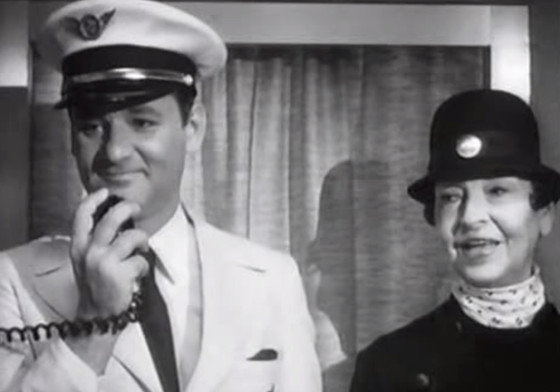
Sadly denied a proper theatrical or even home video release, Tom Schiller’s sci-fi comedy Nothing Lasts Forever remains a notable cult classic. Filmed to imitate 1930s cinema with a few color sequences that scream early 1980s, Nothing Lasts Forever unravels in a futuristic New York City where an aspiring young artist named Adam Beckett (Zach Galligan) travels to the moon in search of love and adventure.
The cast also includes some surprising names such as Dan Aykroyd, Sam Jaffe, Bill Murray and Mort Sahl, and famously was to co-star John Belushi, whose tragic death occurred just weeks before production began. Oh, what could have been!
10. How I Live Now (2013)
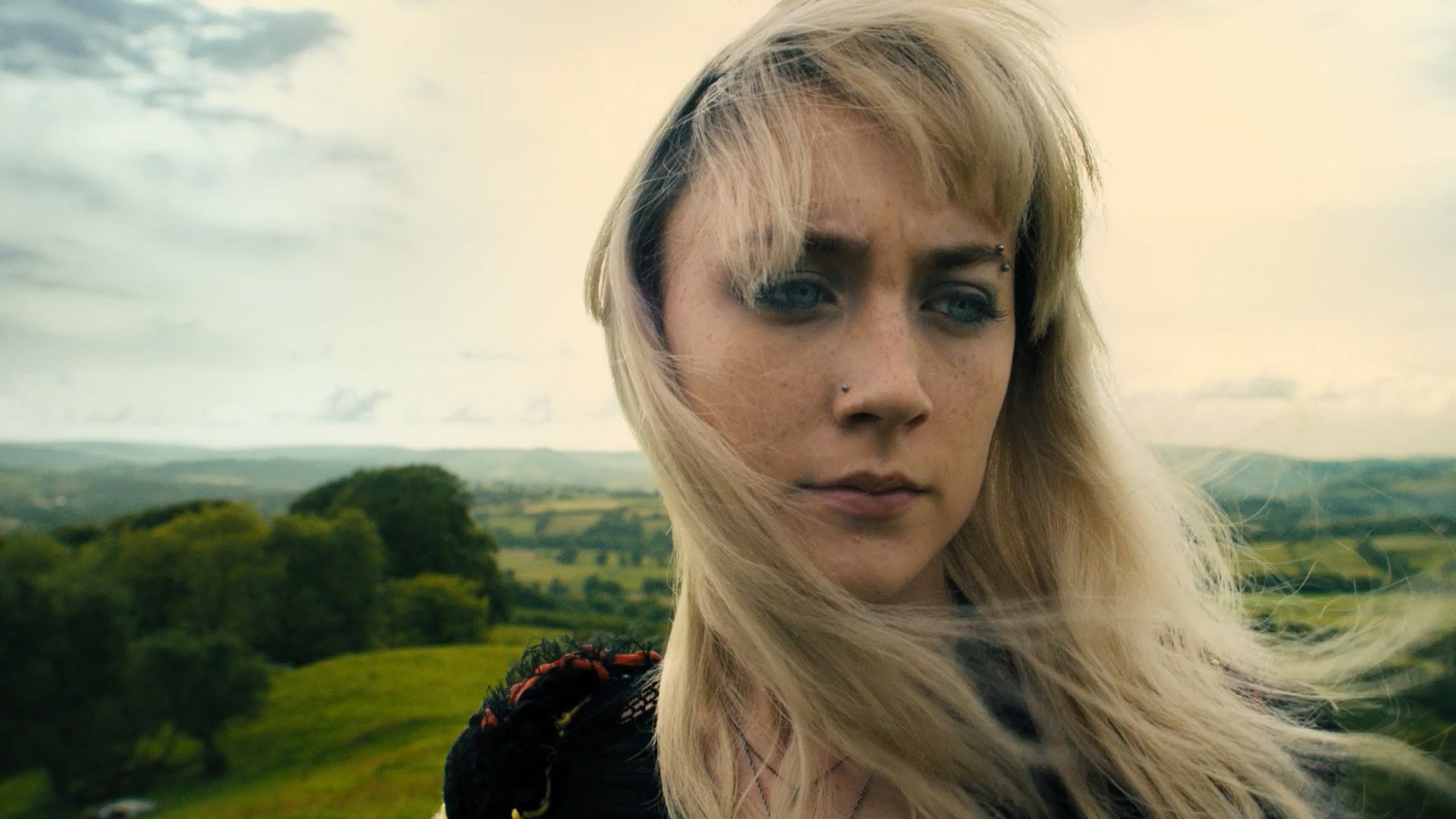
Meg Rosoff’s award-winning YA novel from 2004 provides the basis for this coming-of-age amidst apocalypse drama by Scottish director Kevin Macdonald (The Last King of Scotland [2006], Whitney [2018]).
And while How I Live Now may, at a cursory glance, seem a predictable Hunger Games-esque story, it’s actually an intelligent antithesis to such gimmicky franchise fodder. Also, another feather in the film’s cap is that it features a fine performance from Saoirse Ronan, an actress who makes the more tender elements of this tale all the more sadly profound.
Decidedly dark with a strong and uncompromising finish, How I Live Now deserves a wider audience, so be sure to see it, and tell your friends (it also has a very fine early performance from current Spider-Man, Tom Holland).
9. Outland (1981)
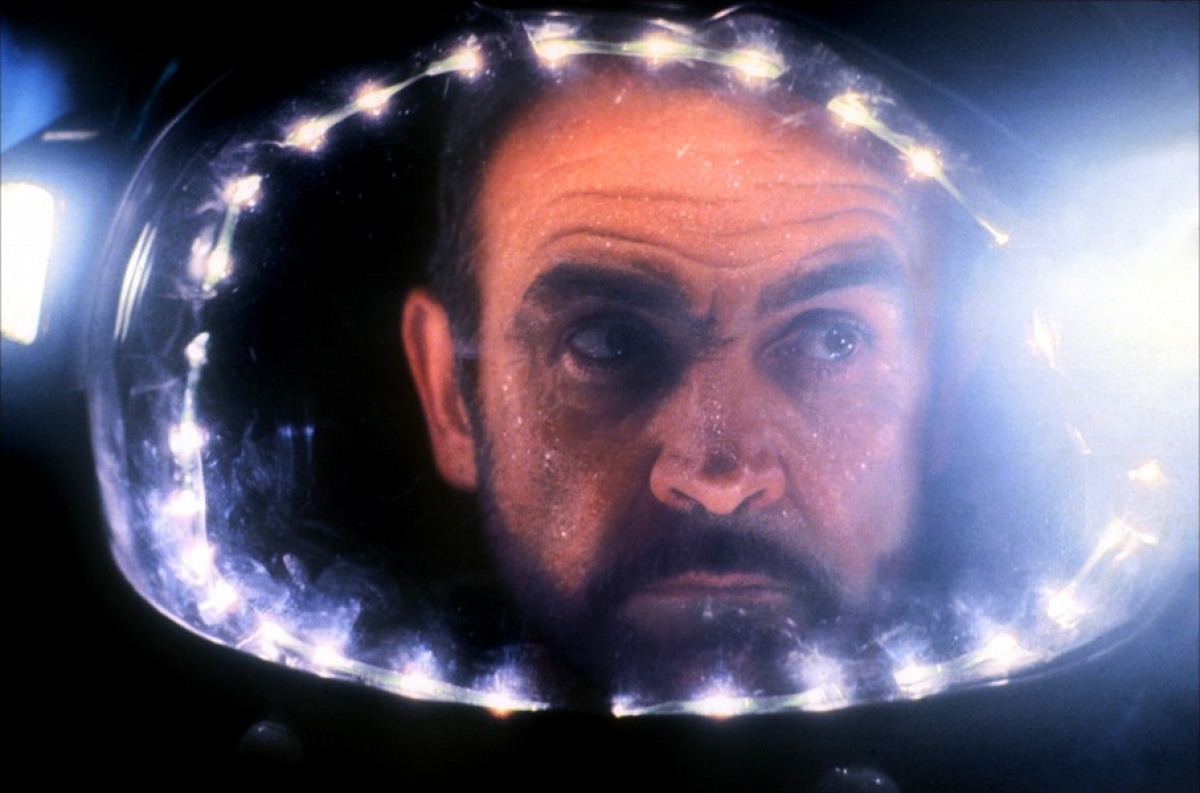
Writer-director Peter Hyams smartly cast Sean Connery in this sci-fi/revisionist Western about an honest officer of the law in a corrupt mining colony on Jupiter’s sunless third moon, Io.
Michael Blowen of the Boston Globe was one of many critics to point out the influence of the Wild West on Hyams’s film, writing that “…the parallels between Outland and Fred Zinneman’s 1952 western High Noon are apparent. […] Hyams has transported the characters and motifs from the dusty frontier town of Gary Cooper to the frontiers of space.
While Hyams keeps the story barreling along, he also develops a corollary anti-capitalist theme. Io is an outpost for exploitation, and it doesn’t make any difference whether the miners are digging gold in the Colorado hills or titanium on Jupiter’s moon, the greed of the corporate class will prevail.”
Outland is also worthy of rediscovery for its impressive production design, which showcases the future realism of Ridley Scott (Alien comparisons were also prevalent back in 1981 when Outland was first released). Io is a isolated, neo-industrialist space station that has many claustrophobic set pieces that immeasurably add to the film’s moody atmosphere.